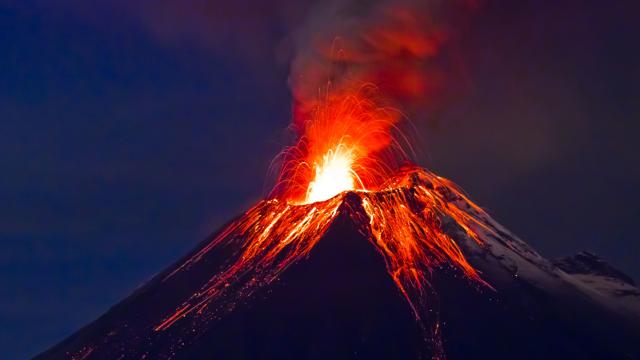At school, we were all taught that volcanoes — just like the one rumbling away in Iceland — erupt when narrow jets of magma are forced outwards from the core of the Earth. It’s a compelling enough story that it’s appeared in textbooks for decades — but it’s also, apparently, completely wrong.
So, the theory we all know and love goes that these long, thin columns of magma — referred to by those in the know as mantle plumes — act a bit like pipes. There’s a well of liquid rock close to the core of the Earth and, though we don’t quite know how when they formed, these narrow outlets that are 3000km long and less than 320km across allow it to vent out to just below the Earth’s crust, in the mantle. Where those columns sit in the mantle there are hot spots — and when the Earth’s stiff crust fractures slightly, the magma can burst up and out as a volcano.
The problem is that such long, thin columns of magma aren’t easily explained by basic physics. “Mantle plumes have never had a sound physical or logical basis,” explains Don Anderson, Professor of Geophysics at Caltech. “They are akin to Rudyard Kipling’s Just So Stories about how giraffes got their long necks.”
That may sound harsh, but he has evidence to back his point: despite scientists holding that the current volcano theory is accurate, seismological searches for the plumes — the only way to look that deeply into the planet — have yielded no trace of them.
But Anderson has a new theory, which he’s just published in the Proceedings of the National Academy of Sciences. Based on the latest seismological analysis of the planet’s structure, Anderson and his team have discovered that the plumes are far bigger than anyone ever considered in the past; in fact, there are huge chunks of hot mantle rising at any one point, which are thousands of miles across.
Imagine a lava lamp inside the planet, with wax replaced by molten rock, and you’re not far off. When the hot stuff gets to the top, some of it cools and then falls in long, narrow channels. So, in essence, the new theory is kind of the reverse of the old one.
In terms of volcanoes on the surface, the new theory means that their magma actually comes from much closer to the surface of our planet, at the top of Earth’s mantle, rather than jetting up from closer to the center of the Earth. Interestingly, that means that volcanic eruptions aren’t fuelled by excess heat from the core, but rather how the magma close to the surface cools over time.
Of course, that doesn’t make eruptions any less damaging when they happen — but it does mean that we can rewrite the textbooks. [PNAS via Caltech via PhysOrg]
Picture: Pablo Hidalgo/Shutterstock
